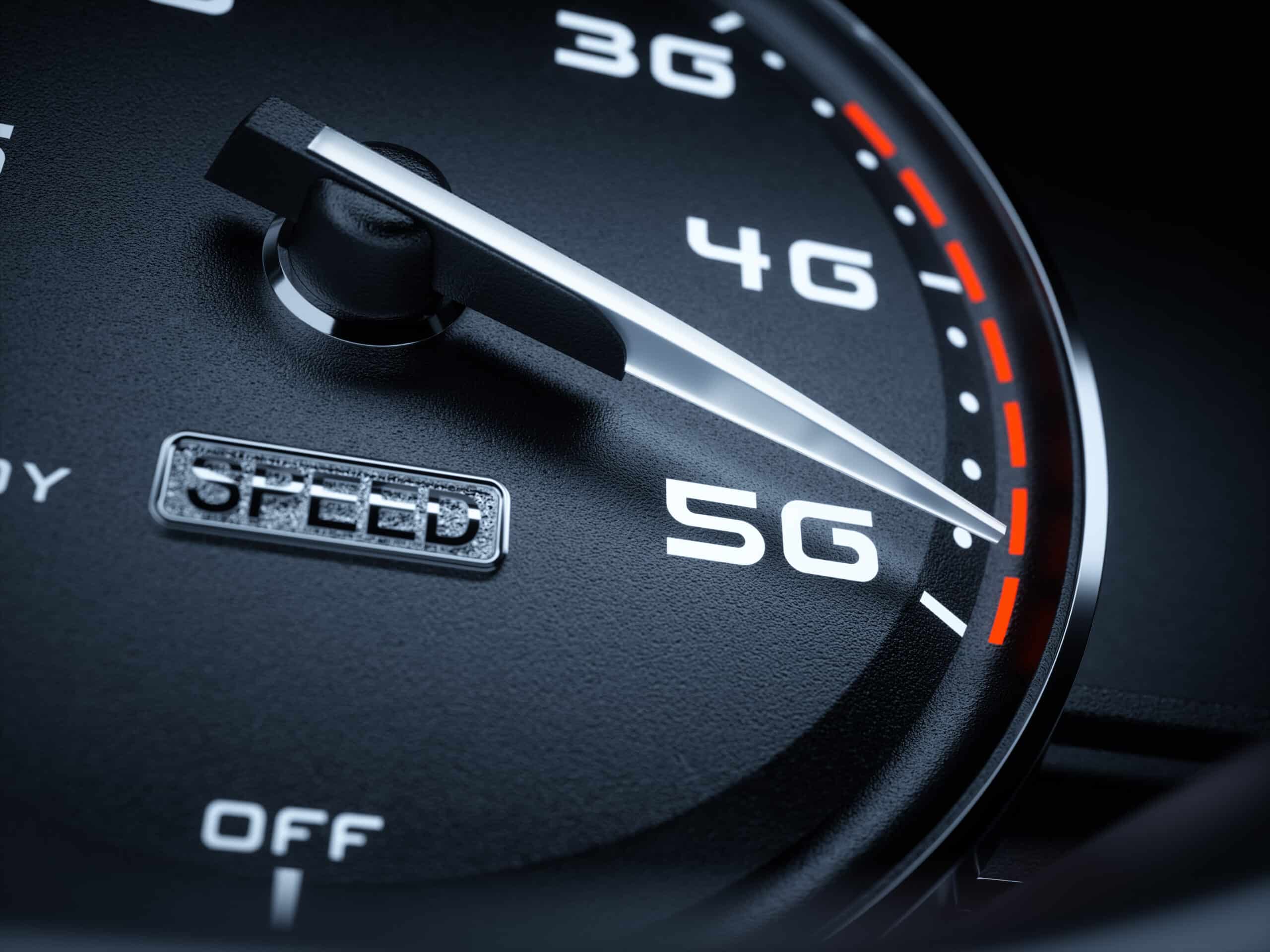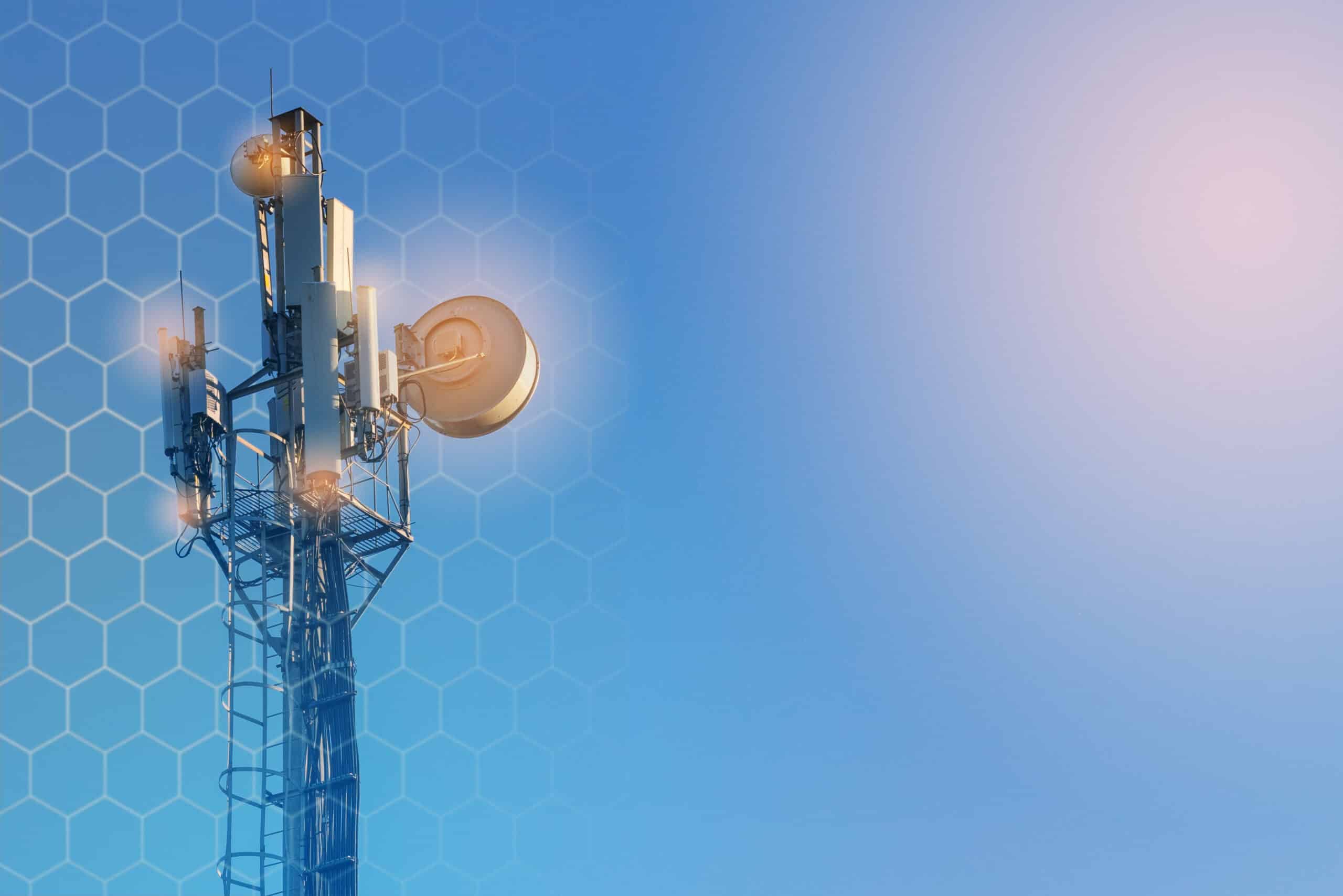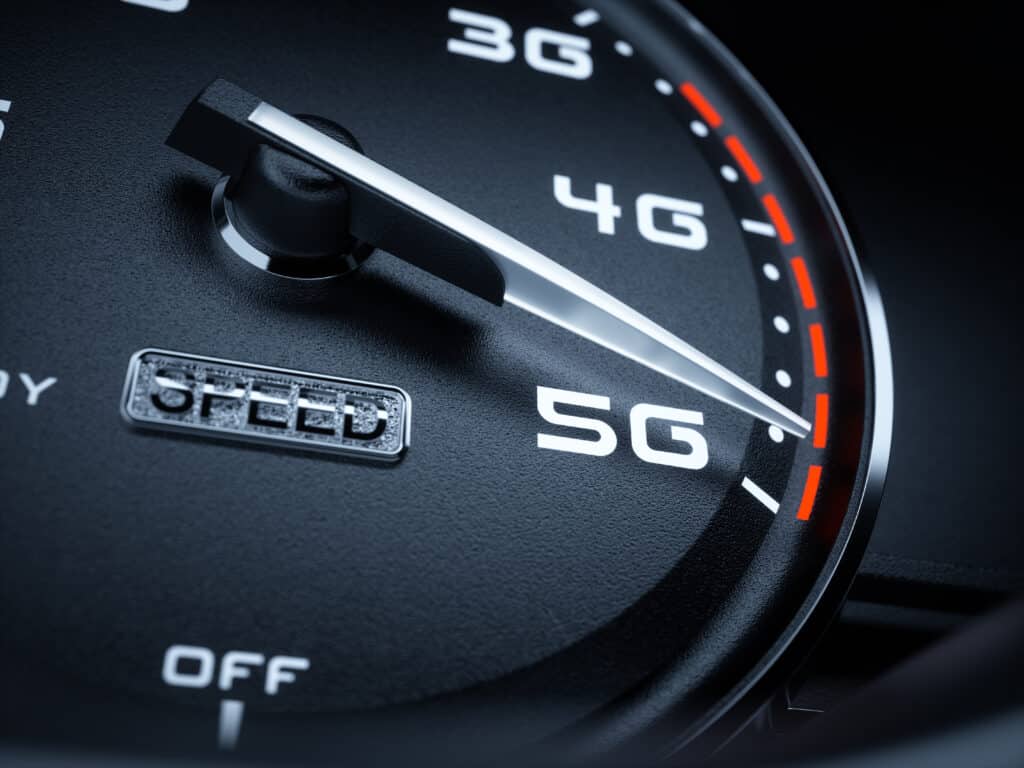Around 60 years after Germany’s first cellular network was launched, 5G (5th generation) is all set to follow 4G (or LTE) in the near future as the market’s next mobile standard. 5G represents a new stage in the evolution of mobile communications. But what can it actually do? And what conditions must you fulfill in order to take advantage of the new high-speed cellular technology’s breathtaking data transfer rates?
You can find answers to these and other questions linked to this exciting topic in the article below.
What is 5G?
Above all, 5G will revolutionize mobile data transfer by providing higher capacities within individual mobile radio cells. In short, the fifth generation of mobile communications will bring faster transfer rates, reduced latency and generally more new applications. It will meet future requirements for data speed, network capacity, latency, and data security. So is 5G a giant step into the future? Whereas 4G / LTE currently achieves bandwidths of up to 150 Mbit/s, or up to 300 Mbit/s in some cities, the bandwidth for 5G is much wider. And while the 4G bandwidth may be fine for fast downloads of large amounts of data, the new generation will have the ability to connect machines and devices. It will do it about 100 times faster than its predecessor – with virtually no perceptible delays and on thousands of devices at once.
Will 5G mean the end of 4G?
No, it won’t. The introduction of 5G is more like an evolutionary step that will supplement the existing network. The parallel operation of both technologies will enable higher capacities and faster network speeds in the future. There will be no obligation on private end users to purchase new devices. The LTE network (4G) is an integral part of 5G and as such will naturally continue to be operated and available in the future.
What requirements must be met before 5G can be used?
This new communications standard will require additional frequency bands. Numerous network layers will exist within 5G, which will be able to serve different applications individually in parallel. This technology is referred to as network slicing. It is based on technologies such as network functions virtualization (NFV) and software defined networking (SDN). Moreover, in Germany, more than 80 percent of Deutsche Telekom’s existing mobile antennas are already prepared for 5G. The 5G first antennas are already installed in test areas in Berlin, Darmstadt and the Port of Hamburg, and Telekom meanwhile has 150 5G antennas in operation throughout Europe.

Who are the target group for 5G?
Data traffic continues to grow unceasingly throughout the world. Network operators face the immense challenge of meeting demand for fast, ubiquitous data links by providing better and larger wireless networks. Now that people worldwide are connected as standard, the next step is being taken into the future. Communications are expanding to include machines and devices, connected in the Internet of Things. When 5G is introduced, there will be winners practically all round.
Focus on industry – but private users will profit too
Not only industrial applications and machinery, logistics (Industry 4.0), robotics and AI will be upgraded as a result of all this but also areas like traffic and vehicle telematics – self-driving cars are currently a hot topic– not to mention telehealth and agriculture. Although the focus will be on industry, private users, too, will profit from the new generation of mobile communications, especially when it comes to smart home technology and entertainment solutions. White spots will become a thing of the past, or at least that is what the German government has been telling us. Politicians have pledged to provide cellphone users with “reliable and comprehensive mobile coverage, especially in rural areas”.
Who owns the rights to 5G?
The rights to 5G were auctioned a few weeks ago by the Federal Network Agency. Deutsche Telekom, Vodafone, Telefónica and newcomer 1&1 Drillisch each want to build their own 5G networks. All in all, the auction raised 6.6 billion euros for the German government. The lion’s share (2.17 billion euros) was paid by Telekom, followed by Vodafone (1.88), Telefónica (1.42) and Drillisch (1.07). Blocks of frequency in the 2 and 3.6 gigahertz bands were acquired. The 2 gigahertz blocks were far more expensive because this frequency band has a much longer range. However, these blocks cannot actually be used until 2021, or in some cases 2026. The frequencies were initially allocated until 2040. The government intends to invest the money from the auction in the digital transformation, for example in improving the fiber optic infrastructure in rural areas or funding Internet upgrades in schools. Corporations like BMW, BASF, Bosch, Daimler and Siemens have already announced plans to build their own 5G networks at their respective production sites regardless of the big mobile phone companies.
What are the problems and dangers associated with 5G?

In the same way as 3G or 4G, 5G relies on electromagnetic radiation, which has long been suspected of being harmful to our health. Yet provided cell towers and smartphones observe the existing transmit power limits, they are considered to be sufficiently safe. The thresholds are based on the proven heating effects of radio waves – similar to microwaves, where suitable shielding serves to block radiation emissions.
The problem is that numerous research projects on cellphone radiation have also pointed to non-thermal effects, which have nothing to do with temperature. Some of these effects allegedly occur below the legal limits and could be responsible, among others, for genetic defects, cancer and loss of concentration. A whole series of studies and publications claiming this exist worldwide. The search term “5G” returns countless videos on YouTube alone on the potential risks and how to avert them. Having said that, there is no hard and fast evidence that such dangers are even real.
Huawei under fire
The same also applies to security. This is a much-debated issue, and concerns have not yet been dispelled as to which manufacturer should be charged with building the networks. Market leader Huawei, in particular, has repeatedly come under fire. The U.S. has warned Germany against resorting to Chinese technology. America and its allies have reached an agreement not to employ any Huawei components for security reasons. Notwithstanding this, Germany will continue to trust at least partly in Chinese know-how.
When can 5G be used?
The 5G network is scheduled to go live in Germany starting in 2020. The coverage obligations imposed on network operators are tough: by the end of 2022, 98 percent of households as well as major highways and busy railway lines must have access to fast mobile communications, though not necessarily with 5G – the Federal Network Agency does not explicitly state that 5G technology should be used here. Furthermore, the frequencies recently auctioned have a high data transfer rate but a short range.
Operators will therefore have no option but to expand their networks in less-populated areas using 4G rather than 5G.
For this reason, network operators will (have to) implement the network expansion in the area with 4G rather than 5G. “5G is a revolution”, Mike Cansfield, analyst of the International Data Corporation on heise.de is quoted as saying: “and it’s happening now.” Only not here, in Germany, but in the USA and parts of Asia. There, network operators are already rolling out 5G technology. In South Korea, for example, the first 5G smartphone is already on the market and the corresponding mobile phone network has been in operation for a long time. And it is already in widespread use. Many EU member states have also been dabbling in frequency allocation, many are not even as far away as Germany. “Europe’s problem is harmonisation,” said Afke Schaart, European head of the network operator association GSMA, in March at the Mobile World Congress in Barcelona. Only a small part of the spectrum planned for 5G has already been allocated by the EU member states – Germany is one of them – and in some countries there are other users sitting on the frequencies.
For the first time as a video: New column by Dr. Andreas Helget is online
Happy Birthday, IoT: The Internet of Things recently turned 20





I Am Very Glad and Happy To Become In Touch With {www.yokogawa-blog.de}. Many Thanks !!!!